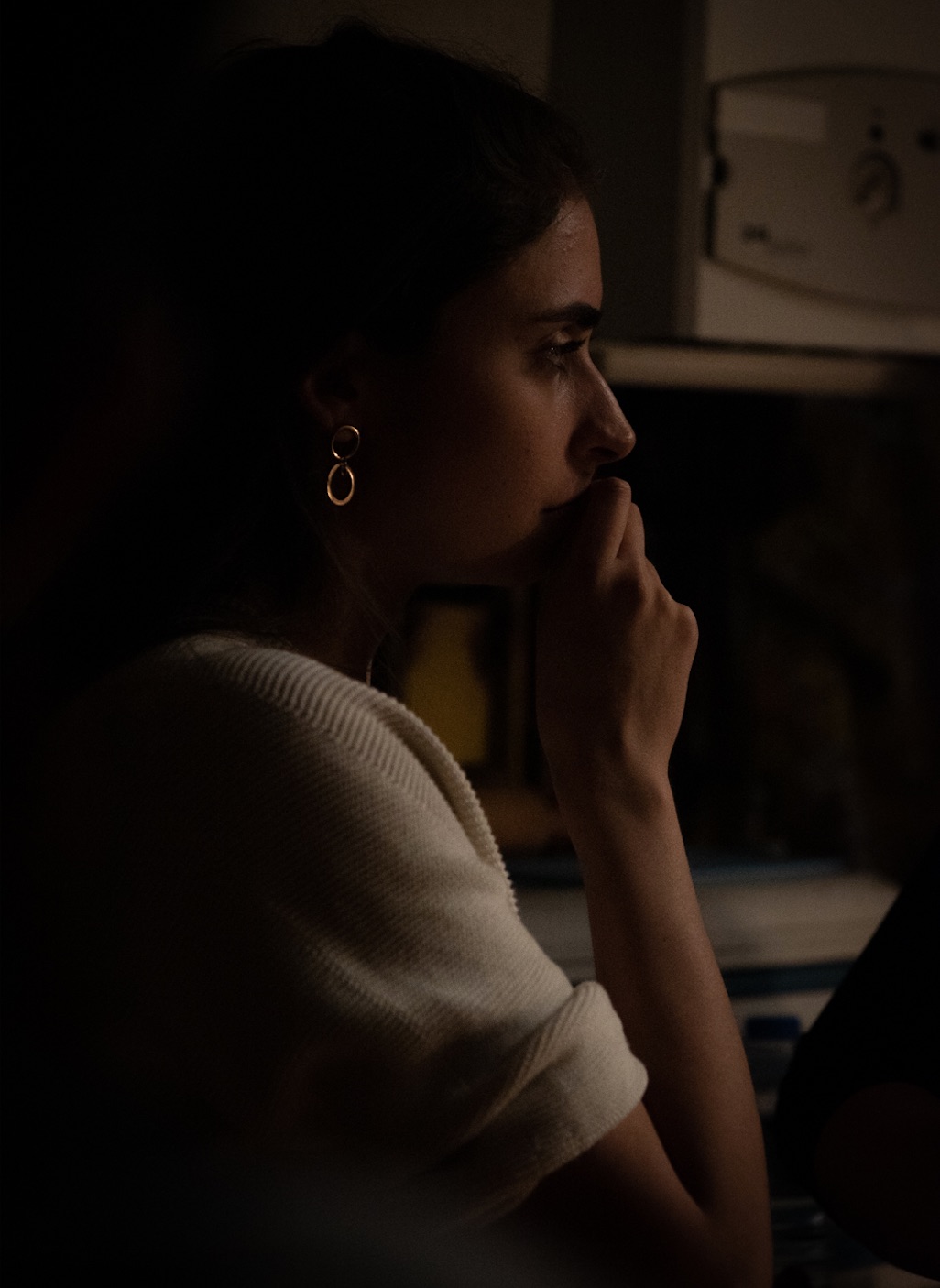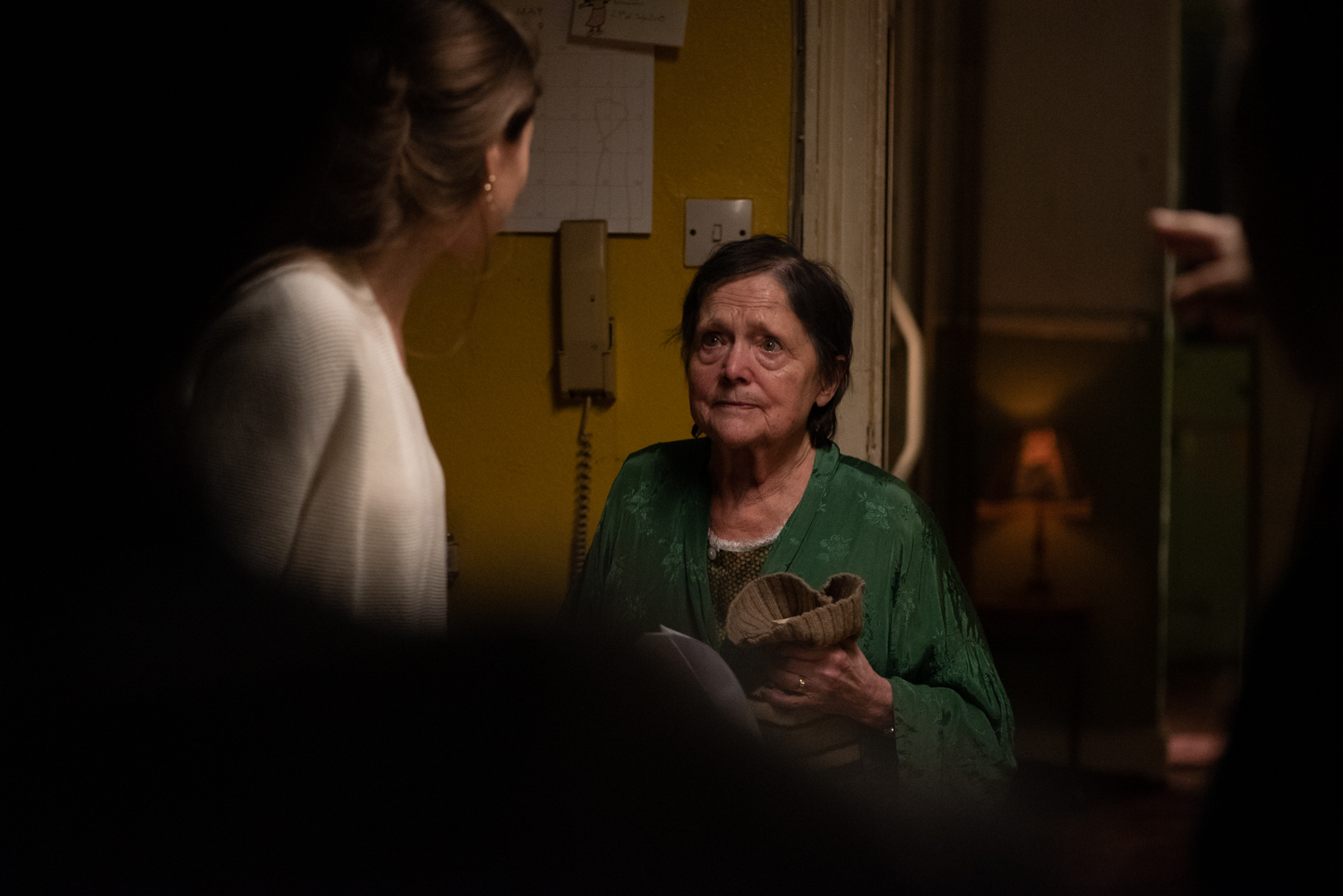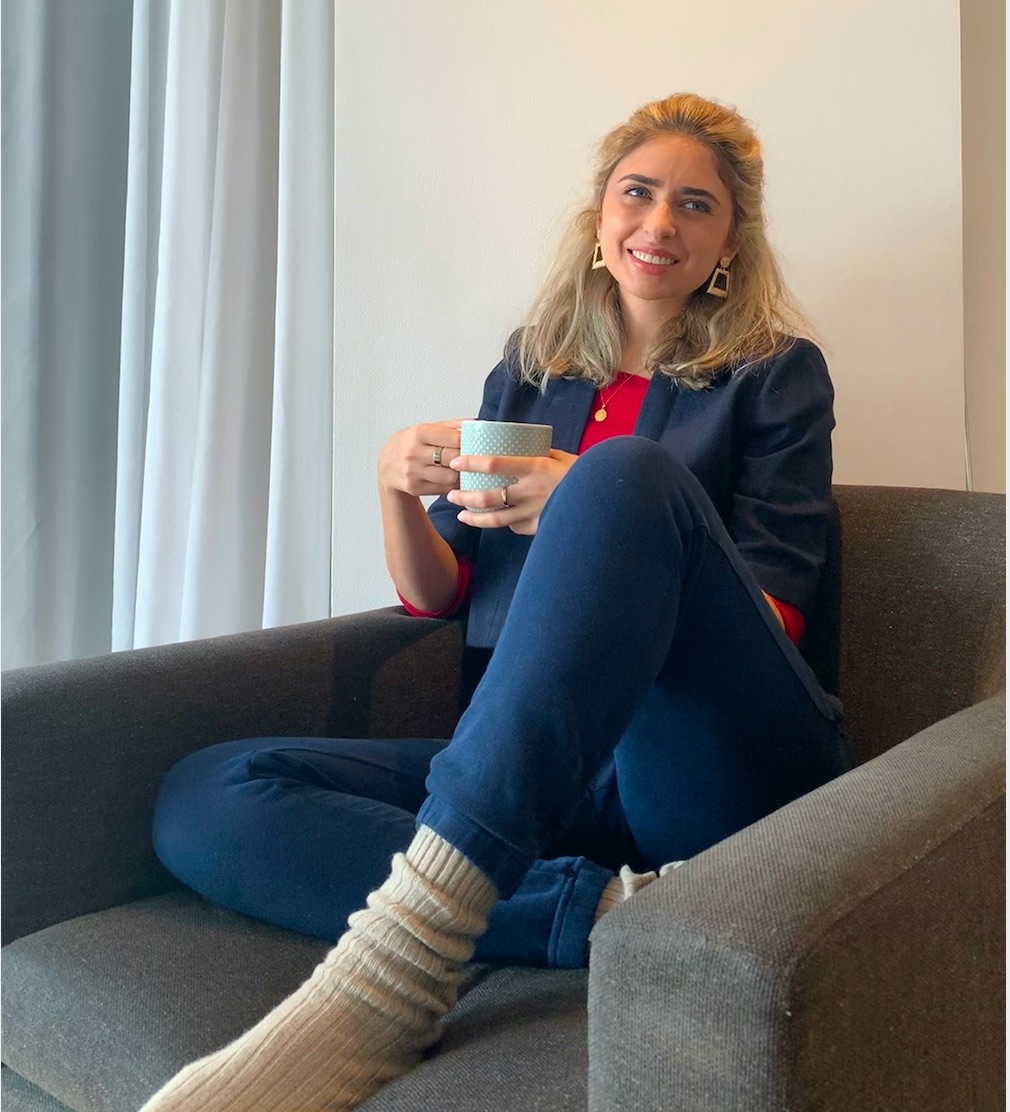Chloe Askari Pope
Tell us a bit about your childhood – do you come from a creative family?
My immediate family aren’t in the creative industries, but I think creativity is in every one of us. I see it in the way my brother tends to dying cabbages in the garden, or the way my aunt finds ways to communicate to her care home dementia residents. Creativity is everywhere.
My British granddad though, was an author, Ray Pope. I never met him but he wrote many children’s books, including the series called ‘The Model Railway Men’. They were based on a model railway set he had in the attic that my dad used to play on. A few years ago, Rod Stewart, being a big railway fan himself, wrote to my dad thanking him for the books… I think he read them when he was younger…which was pretty cool.
What are some of your earliest memories of film?
My earliest memory of film was an Iranian puppetry movie for kids called ‘Mouse City’ – or ‘Shahr-e Mooshha’ in Farsi. I’m lying on my stomach on a thick Persian rug on the floor. The fan’s humming. And I can hear my grandma’s old fridge buzzing too. The rest of my family are taking an afternoon nap to escape Tehran’s sweltering heat. But I’m not, I’m totally immersed in the world of ‘Mouse City’ on the TV. I’m loving every puppetry detail. Their little hats. The schoolteacher’s classroom. And the constant singing. A terrifying, evil cat is approaching to invade their little town and all the mice have to immigrate to escape him. Luckily in the end they strike up the courage to return and defeat him. As an adult I suspect there were political undertones in the narrative, seeing as it was just a few years after the revolution. But back then, I just loved the city of mice.
As a copywriter and art director, what made you decide to take the plunge into directing as well?
As an ad creative, you write a lot of scripts, a lot of ideas. I think what pushed me into taking the plunge into directing was when I realised that instead of stories sitting in my drawer, my bedside notebook, or in my head, I should make them myself. Advertising is not so dissimilar to film in that it boils down to storytelling. And I love storytelling, it’s my happy-place. Ever since I can remember, be it film, literature, or even the neighbour’s rant about their Sainsbury’s delivery saga; I’ve loved listening to and telling stories.
Órla and the fish, your directorial debut, is an incredibly moving portrait of loneliness and isolation in old age. It feels like a deeply personal film – where did the idea come from?
There were a few things. I had seen a beautiful photography series called ‘Visiting Olive’. The photographer Fiona Bailey captured a very intimate set of stills as she visited her elderly neighbour in the final few weeks before she was moved to an elderly home. The silence in those photos really struck me. Olive’s world seemed so sadly quiet. At the time, I was also volunteering at tea parties for the elderly, organised by the charity Reengage. Many of the guests lived with loneliness, the importance of company and community was so clear.
So when writing for my short I decided to tell this seemingly small (though emotionally huge) human story. That we all need a little company. Having a little company can make the world of difference, and could be anything, a friend, a friendly neighbour… the little pet fish even. That’s where Rudy comes in. He gives Órla company and purpose. It was important for me not to make an overly depressing film, or to overly victimise the main character. It’s not a PSA ad and I’m not sure how motivating a film that would be. Rudy’s the little bubble of joy in her day – and hopefully the audience’s too.
And I think that despite loneliness, failing health and a lack of purpose even, a real fervent dedication to life can still be found in old age. There’s a real human strength we all have to continue. Many of our elderly tea party guests had experienced a lot of loss. Loss of loved ones, friends, family, health, homes. “One day you look at your phone book and realise everyone’s gone,” one told me. And yet… they still get up. One of the guests still dons a bright red beret, red lipstick and matching red earrings. There’s still a dedication to life.
In the end I wanted to show this strength. That despite losing even the little company she has in Rudy, eventually Órla gets up and gets on with her life. I think that’s almost heroic.
Chloe Pope and Mary Healey on set
The film was made via the National Film and Television School ‘Diverse Directors’ program: how did that opportunity come about, and what were the biggest challenges you encountered, both in getting the project off the ground and during production?
The opportunity and scheme was created to encourage more female and ethnic diversity within film directing. It was funded by Disney and run at the NFTS. As I’d never actually directed before, I applied using my commercial work as an example of my storytelling. We had a two-week crash course in directing, and then onto the shoots.
One of the biggest challenges I found was working a full-time job in advertising while doing my first film. I’d never written to that length (mostly 60”!), directed, or had any involvement in production before. I managed all the post work too, which was all new to me. Luckily, I was able to lean on contacts through my commercial experience. Thank goodness for my editor Alex Burt who was amazing throughout the whole process, and Tony Rappaccioli and Harry Butcher at Wave Sound studios. I’ve never had to post-produce, so I learnt a lot. Mainly how terrible a producer I would be.
Mary Healy, the actress who plays Órla, delivers such a beautifully understated yet heartwrenching performance; how did you arrive at your casting decision?
I worked with a brilliant casting director, Sharon Sorrentino. I didn’t hold castings but worked with Sharon to find the right actress. She showed me Mary’s sketch in The Royle Family and I loved her warmth and her sense of humour. She has a beautifully expressive face. We sent Mary the script and crossed our fingers. Luckily, she loved it.
Mary and I then met and discussed the story and our own experiences. I wanted to take a lot of the lead from Mary herself. She got the story, she got the character, and we really got each other too. One day there was a lot of discussion on how Órla should remove her dead fish, that it should be more ceremonial, on a special napkin or she should plant him with her roses etc. I said to Mary, “I think Órla would just use her soup ladle and flush him down the loo.” She just cracked up and said, “That’s it.”
What are your favourite aspects of the finished film?
I think Mary’s performance is key. Every department from the crew to post really did a great job, but at the end of the day, the actors are the ones really telling us the story. Although she barely says anything throughout the film, Mary’s face says it all.
Visually, I think every scene is rich in colour and character. Our colourist Janak Griffin Rai really crafted the hues of her home. Considering all the patterned, reflective, and textured 1970s wallpapers, that was quite a task! And this was his first short film too. The music is also one of my favourite aspects. Our composer Stephanie Taylor did a beautiful job in capturing a subtly understated piece to accompany Órla’s quiet existence. Together we spoke about the music brief, the story and the character’s background and the first thing Stephanie shared was the answer. It’s a beautiful, poetic motif. Unintrusive and hopeful. Just like Órla.
Probably the best thing about the finished film, though, is that people have told me it made them want to contact their grandparents.
More generally, where do you find creative inspiration? What themes are you drawn to as a creative and now director?
I love a bit of magic. Human stories but with a touch something special. When thinking of Órla and Rudy the fish, I wanted their relationship to be similar to Gepetto and Cleo in Pinocchio. Obviously animation is much easier to draw out expression and character, but in the minds of myself and my cinematographer Alana Mejía González, we tried to treat and see Rudy the fish as a real character in himself, just like Órla.
In my commercial and personal work, I like to draw themes and references from unexpected genres. It makes for more surprising and less familiar work. Like they say: if you want to make a car ad, don’t watch car ads.
What kinds of storytelling opportunities do you hope to tackle in future commercial (or personal) projects?
I love the chance to create worlds. Both in commercial and personal projects. That’s where I have the most fun. A pinch of magic can make it a world in itself.
In the future I’d love to do an animation. I’m writing a few scripts at the moment which I see being animated, or stop motion, and one is actually based in Iran and in Farsi. So we’ll see – maybe one day I’ll make my own ‘Shahr-e Mooshha’.
Interview by Selena Schleh
See Adam&EveDDB senior creative team Chloe Pope and Jessica Morris’ campaigns
















